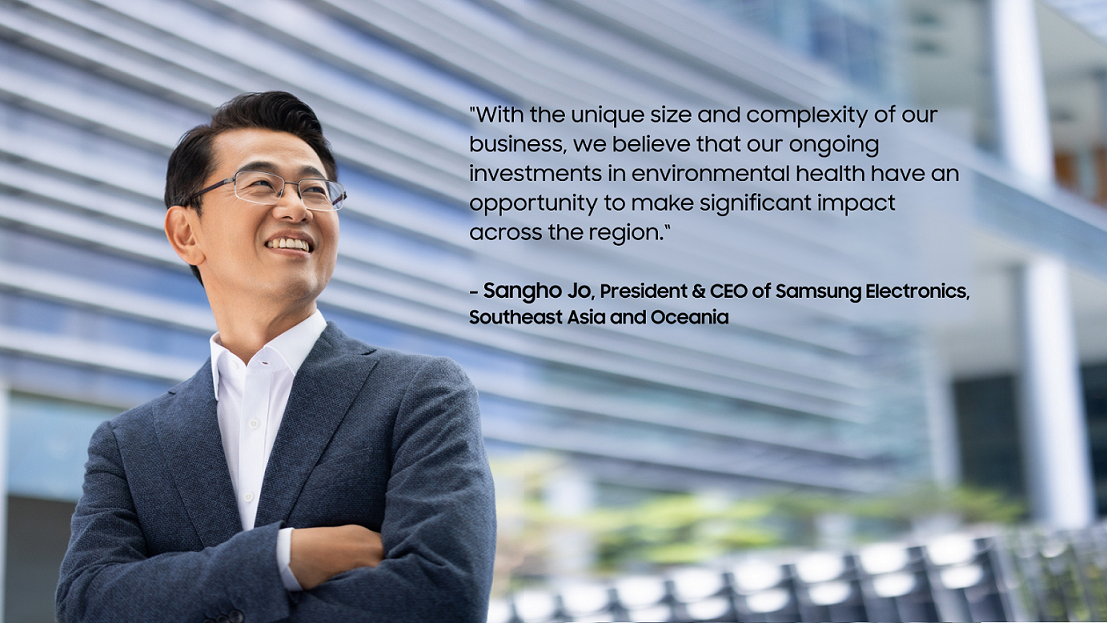More than ever, governments, companies, and consumers are putting sustainability at the centre of their debates and activities. Addressing the global climate disaster and developing a circular economy are without a doubt among the most significant and pressing concerns of our time.
Samsung Electronics actively working to improve environmental sustainability for current and future generations. With our company’s unique size and complexity, we feel that our continual efforts in environmental health have the potential to have a big impact.
Watch Samsung’s efforts to overcome climate crisis here:
The new approach to the environment includes everything from promises to achieve enterprise-wide net zero emissions by 2050, increased usage of renewable energy, and strategic investments in new sustainable technologies, all with the goal of creating a better, healthier world for everybody.
This new approach expands on Samsung Electronics’ previous climate change activities, dramatically broadening the scope of future programmes and investments. The infographic here provides a helpful overview.
Samsung Electronics has also joined the RE100, a global corporate renewable energy initiative, and plans to run all operations outside of Korea as well as the Device eXperience (DX) Division on renewable energy within five years. Here in Southeast Asia and Oceania (SEAO), we are on track to achieve the goal for matching electricity use with renewable energy by 2027.
It plans to improve the resource circularity of our electronics goods throughout the product lifetime under the new approach. The Galaxy Z Fold4 and Flip4 have already been developed to contain polymers salvaged from abandoned fishing nets, and we intend to expand this to other devices. Using low-power technology in main models of seven consumer electronics devices – cellphones, refrigerators, washing machines, air conditioners, TVs, monitors, and PCs – to minimise energy usage.


Furthermore, Samsung intends to broaden the coverage of our e-waste collecting system from around 50 nations now to more than 180 countries by 2030. At the same time, aimed to collect a total of 10 million tonnes of electronic trash between 2009 and 2030, one of the industry’s highest ambitions.
Sustainability involves everyone
Eco-friendly practises have been introduced at Samsung Support Centers around the area, with the integrated global customer service system being installed at the majority of Samsung Service Centers in the region as the company strives to go paperless. Customer documentation such as product repair receipts, service records, and invoices are now distributed electronically through message or email.
Furthermore, consumers in Australia, Indonesia, Malaysia, Thailand, the Philippines, and Vietnam are now getting mobile phones that have been turned in for servicing and repairs packaged in environmentally friendly materials. Customers in Australia, for example, may anticipate eco-friendly packaging comprised of 96% recyclable materials that can be recycled into a mobile and table stand.
Reducing E-waste

E-waste ‘Eco Boxes’ are also presently accessible in over 180 Samsung Service Centers around SEAO, including major cities such as Auckland, Bangkok, Kuala Lumpur, Manila, and Sydney, allowing consumers to dispose of their old mobile phones and recycle them properly.
Customers can also opt to replace only the faulty pieces of their product rather than the entire assembly module through Eco Repair to decrease e-waste.
Solve for Tomorrow has resulted in several new projects related to sustainability. Last year, the Team Eco Warriors student team from Hanoi, Vietnam (shown below) won the Solve for Tomorrow High School Category. By melting and remoulding plastic masks into plastic pots, their initial mask-recycling system aims to reduce waste generated by the extensive use of face masks during the epidemic.

Taking action to create a better planet for all
In the next year, Samsung expects to see genuine, concrete improvements in its operations as it implements strong environmental measures and objectives across the region’s markets. Working with staff, customers, industry and government partners, that are positive about the improvements are doing to allow a better world and to make sustainability a part of the everyday lives of people in Southeast Asia, Oceania, and beyond.


